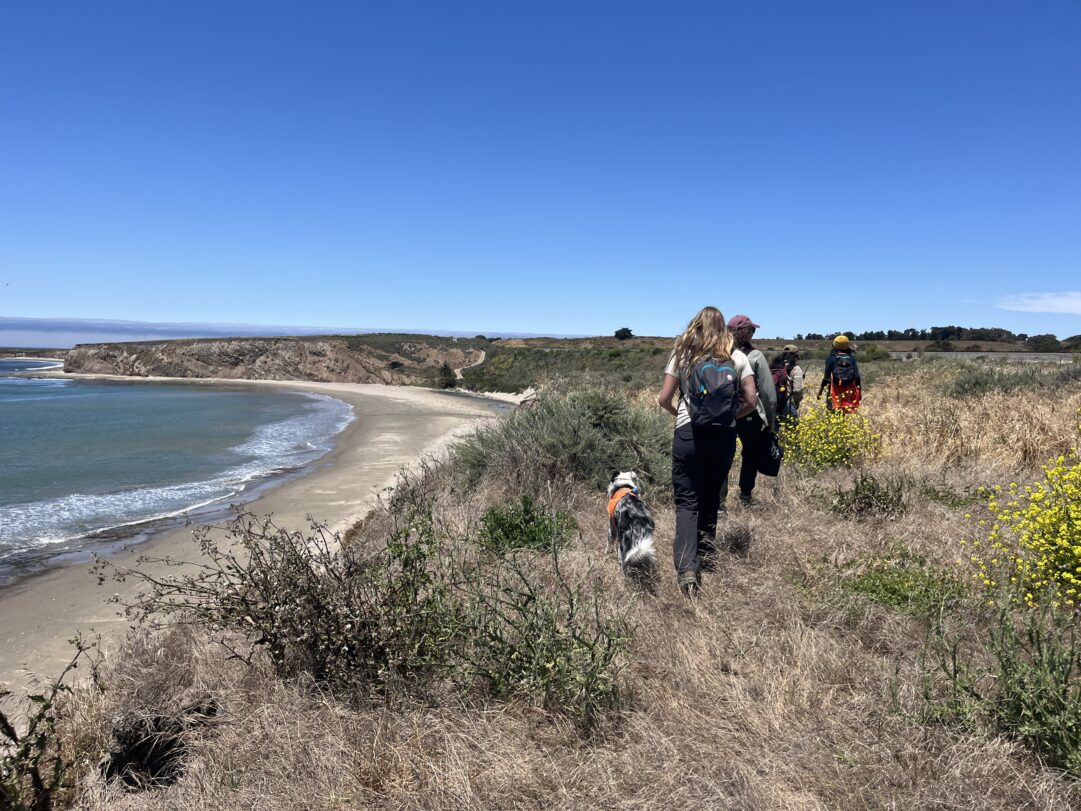Working as a conservation detection dog trainer/handler is an incredible lifestyle for the right person. It’s not for everyone – the hours are long, the fieldwork is physically demanding, and the grantwriting can be grueling. But one of the biggest challenges of “making it” as a conservation dog handler is the pay.
Here’s the truth: conservation detection dog handlers don’t make much money. I live in a van to cut costs and eat a lot of rice and beans. I’m happy, but it’s not for everyone.
I don’t know the exact salaries of everyone I’ve interviewed for the K9 Conservationists podcast. Still, I know many of us have multiple jobs and aren’t exactly “upwardly mobile” in the finances department.
I can tell you exactly why I have made at various conservation dog jobs and how I’ve made ends meet. My average income just from conservation dog work has ranged from $10,000 (seasonal) to $34,000 (salary) per year.
Full-Time Employee Salary
While I was an employee at Working Dogs for Conservation, my annual salary was roughly $34,000 in 2019-20 in Missoula Montana. My rent was $840/month for a studio. With utilities and pet rent, this came out to nearly $1,000/month. I continued to run my dog behavior business Journey Dog Training to help make ends meet. I wasn’t poor, but I didn’t save much money during those years.
I survived on Journey Dog Training income for a few months after I was fired, waiting for my unemployment check to show (it took nearly 5 months).
Seasonal Employee Hourly Rate
Once I was hired as a summer employee of WEST, Inc searching for bird and bat carcasses on wind farms, I made much better money – but just for a few months a year. I made $25/hour for the 2021/22 seasons, which came out to about $10,000 for a three-month contract. My housing, gas, and rental vehicle were also covered, so I saved up quite a bit.
Of course, those savings were necessary when the job dried up each October. WEST, Inc does offer six-month contracts, but I never made one work with my schedule.
I really enjoyed my time working for WEST, Inc. and would happily go back!
Off-Season Gaps
Between my two seasons working for WEST, Inc, I picked up a variety of other jobs to make ends meet. I worked for $12/hour at a humane society cleaning kennels. I worked for $15/hour plus tips teaching cross-country ski lessons in Breckenridge. I wrote freelance blog posts for $0.09/word. I continued running Journey Dog Training, which brought in between $500-$1,000 per month.
At K9 Conservationists
Here at K9 Conservationists, as of July 2023, none of the three of our co-founders are taking a regular paycheck. We get intermittent pay from our online conservation dog handler course and fieldwork, but most of our time is unpaid. We’re hoping that will change soon, but we’re two years into running this program and we all still need other jobs!
Our work Kenya to work with Action for Cheetahs in Kenya was unpaid. The program covered our flights, housing, and food while in-country but we did not make any money for ourselves.
I did make money for our contract doing wild cat surveys in Guatemala. All told I made about $7,500 for that work, minus expenses. They money arrived in April 2023. That was my first conservation-dog-related paycheck since October, meaning there were 6 months between paychecks.
I will also earn about $2,000 for a recent project in California. That money may not arrive until August, meaning another 5 months between paychecks.
Each of these projects was paired with 3-5 rejections for other paid projects or grants, meaning we’re constantly losing out on opportunities to make a living wage.
Part of why K9 Conservationists offers our course and Patreon membership is to try to smooth over the LARGE gaps in pay between fieldwork gigs. But once you start paying for insurance and basic needs for the business, the money for salaries dries up fast.
Going Forward
You can see in the public financials of some of the nonprofit conservation dog companies that their founders make about $60,000 per year. That’s not bad money depending on where you live, but these folks have been in the field for ~20 years and are in their 50s.
I am about to enter a PhD program, where I’ll make a salary in the mid-30s and have my school paid for through the NSF-GRF program. I hope that by the time I graduate (probably in 2028), K9 Conservationists will be able to pay me closer to $50,000+ per year.
Like most young millenials/old Gen Z-ers, I have plenty of economic pessimism about ever being able to afford a house or to live in true comfort. I hope that going forward we’re able to find ways to pay the K9 Conservationists team a living wage. But we’ll see.
 Donate
Donate

